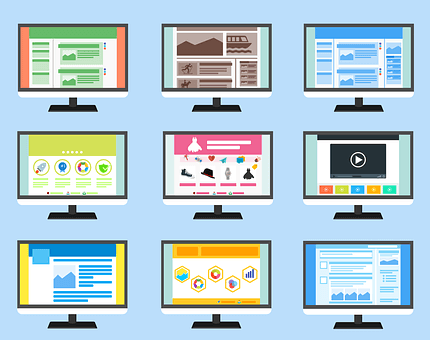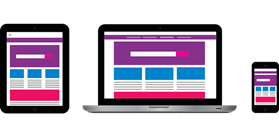Resources for educators
How to develop accessible content
Introduction
Every citizen has the right of producing and sharing information (every time it does not cause a law infringement), and depending on the target user, this information will have to be provided with particular characteristics to be reachable and understandable. Accessibility is defined as the degree to which all people can use an object, visit a physical place or access to a service regardless the cognitive, physical and technical capabilities.
The new United Nations agenda on the Sustainable Development Goals reinforces the idea of equality for a sustainable development in the Objective number 4. Moreover, in the New Delhi Declaration this statement is more evident:
“Universal access to information and knowledge, through technologies of information and communication (ICT) and auxiliary technologies, in equality of conditions with others, it is for people with disabilities a right inalienable human life and a precondition for living independently and participate fully and on an equal footing in society.

The development of accessible content in educational context is elaborated through three principles:
- Representation (What): It refers to the form in which the information is displayed to the user, like texts, sounds, pictures, schemas, etc.
- Expression (How): Allows the users to interact with the information and show what they have learnt according to their capabilities
- Participation (Why): The reason of the knowledge construction and the active and participative learning.
These principles seek to maximize the learning opportunities according to the perceptual characteristics of the users, so the educator can focus on their strengths, their learning needs
and their possibilities of participation. The educator must combine the three principles and use the available resources in a dynamic and flexible way.
Development of accessible texts

The elaboration of texts accessible for all students should follow a set of recommendations:
- Use Arial or Verdana font (without serif). Font size 14 or larger, depending on the visual capabilities of the users.
- The font should be normal (avoid using bold, italic or underlined).
- The texts must be presented with horizontal orientation and without justification.
- The line spacing of the text must be 1.15 or 1.5 dots.
- Capital letters are recommended for the beginning of a sentence or short words.
- Use a soft yellow background with black or navy-blue letters. White background is not recommended as it returns brightness.
- In the case of visual impairment or reading difficulties, audio recording/reading assistant should be used instead.
Use reinforcement pictures linked to the topic of the text to ease the understanding.
Exploring the web

Some of the activities may involve searching information in the internet, browsing interesting portals or just playing. When the educator wants to use this as a resource for the session or even for leisure, it is convenient to explore all the sites in advance to the users.
- Guide the users by offering two or three websites they can start to look for information.
- When possible, the educator should be together with the user and take enough time to analyze the website, evaluating if he/she is able to:
- Read the heading/subheadings of the website
- Look the pictures and images in the website
- Identify the required information
- Verify the relevant multimedia materials.
- Games are always an attractive resource. The educator must guide the user during the activity to frame it in an educational context.
Accessibility in the web
Web accessibility is the universal access to the web, regardless of the type of hardware, software, network infrastructure, language, culture, geographic location and capabilities
user.
The Web Accessibility Initiative (WAI) developed by the W3C is an international community that develops recommendations and web standards. The objective of the WAI is to facilitate access for people with disabilities, through the development of accessibility guidelines, improving the tools for their evaluation and repair, through of an educational and awareness work in relation to the importance of accessible design of websites.
Content Accessibility Guidelines state that websites must respond to four principles:
- Perceptibility: the information and interface components are presented to the user in a way in which he/she can perceive them, regardless of his sensory abilities.
- Understandability: It refers to the fact that both the information and the handling of the user interface must be understandable.
- Operability: the interface and navigation components must function in such a way that the user can navigate the content smoothly and independently, regardless of the device you use and the speed of use.
- Robustness: the content and operation of the website must be as robust enough to be interpreted by a wide variety of devices, including assistive technologies.
These principles include a series of guidelines that allow us to improve and eliminate those elements that block or interfere with access to the web.
Resources
- Web Content Accessibility Guidelines. https://www.w3.org/WAI/standards-guidelines/wcag/
- Guidelines for the elaboration of accessible digital materials. Ministry of Education. Government of Argentina.
- Introduction to Web Accessibility. The Chang School. https://pressbooks.library.ryerson.ca/iwacc/
- Web Accessibility Guide. Andersen, K., Hoss, H., Bridge, C. (ISBN 978-0-7334-3949-0) https://www.homemods.info/resources/hminfo-research-publications/occasional/web-accessibility-guide
